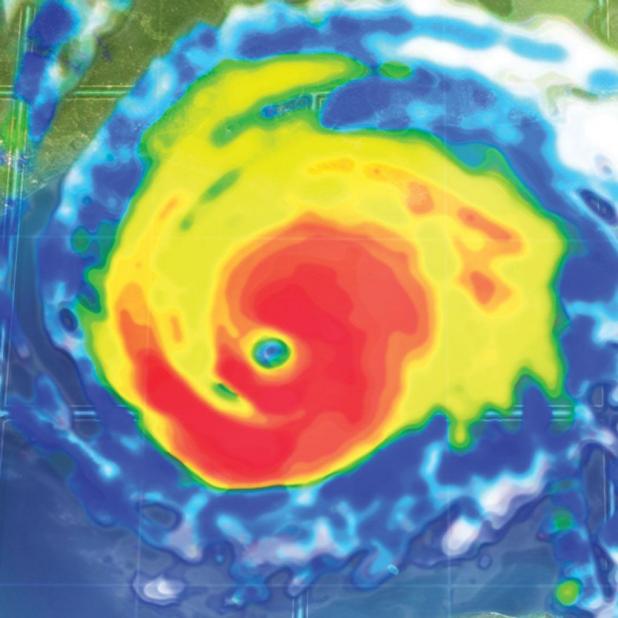
NOAA predicts more active hurricane season than inital forecast
The National Oceanic and Atmospheric Administration is predicting a higher likelihood of above-normal tropical activity this hurricane season than initially expected, according to a NOAA article.
On Aug. 9, forecasters increased the predicted number of named storms and major hurricanes. The season has the potential to be extremely active, and could be the most active since 2010, the article stated.
They now say there is a 60-percent chance of an above-normal season, compared to the May prediction of 45 percent, with 14 to 19 named storms, increased from the May predicted range of 11 to 17, and two to five major hurricanes, increased from the May predicted range of two to four.
A prediction for five to nine hurricanes remains unchanged from the initial May outlook, the article said.
The update also decreased the chance of a near-normal season from 35 percent to 30 percent, and a below-normal season from 20 percent to only 10 percent from the initial outlook issued in May.
“We’re now entering the peak of the season when the bulk of the storms usually form,” said Gerry Bell, lead seasonal hurricane forecaster at NOAA’s Climate Prediction Center.
Wind and air patterns in the tropical Atlantic and Caribbean where many storms develop are extremely conducive to an above-normal season, Bell said in the article.
That’s due, in part, to a significant reduction since May in the likelihood that an El Niño will form. El Niño patterns tend to work against storm formation.
The Atlantic basin has seen seven named storms: Arlene in April; Bret and Cindy in June; Don and Emily in July; and Franklin and Gert in August.
National Hurricane Center officials are watching three other areas over the Atlantic basin.
One is an elongated area of low pressure located more than a thousand miles east of the Lesser Antilles.
The second is a low pressure area located a few hundred miles west-southwest of the Cabo Verde Islands.
The third is a tropical wave over western Africa that’s forecast to emerge over the far eastern Atlantic Ocean on Wednesday.
Franklin was the first hurricane of the 2017 Atlantic season, making landfall Aug. 10 as a hurricane in eastern Mexico and rapidly weakened to a remnant by Aug. 11, a weather.com article stated.
Gert became the season’s second hurricane Monday night, but was projected to stay well off the East Coast, with increased wave action the only indirect impact, according to weather.com.
Two of 2017’s storms, Cindy and Emily, struck the United States. Cindy made landfall on June 22 at the Louisiana-Texas border and caused heavy rain, inland flooding and multiple tornado outbreaks. Emily made landfall on July 31 in Anna Maria Island, Florida, the NOAA article said.
Gert became the seventh named storm of the season late Sunday afternoon, the weather.com article said.
Meteorologists are currently watching three other areas over the Atlantic basin.
Other factors that point to an above-normal season include warmer waters across the tropical Atlantic than models previously predicted and higher predicted activity from available models, Bell said.
An average Atlantic hurricane season, which runs from June 1-Nov. 30, produces 12 named storms, of which six become hurricanes, including three major hurricanes.
“As we enter the height of hurricane season, it’s important for everyone to know who issues evacuation orders in their community, heed the warnings, update their insurance and have a preparedness plan,” FEMA Administrator Brock Long said in the article.
The updated outlook is based on the current and evolving atmospheric and oceanic conditions, the most recent model predictions and pre- and early-season storm activity.
